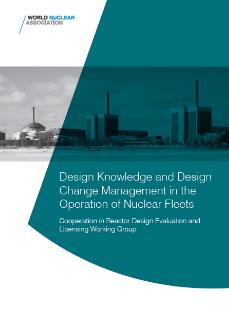CORDEL Design Knowledge and Design Change Management in the Operation of Nuclear Fleets
The operating lifetime of a nuclear plant spans several decades. During this time, the plant may undergo design changes as a result of experience feedback, new knowledge or requirements, and safety reviews.
To ensure that safety remains optimised, these changes must be carried out with a full understanding of and without compromising the design intent.
The licensee, usually the operator, holds prime responsibility for the safety of the plant, and by extension it is fully responsible for design change management. According to the IAEA (SSR-2/1), it should fulfil this responsibility by establishing “a formal system for ensuring the continuing safety of the plant design throughout the lifetime of the nuclear power plant”. This system should include “a formally designated entity responsible for the safety of the plant design within the operating organization’s management system”, an entity referred to as Design Authority according to INSAG 19, which details its role and responsibility.
The requirement to establish a Design Authority within each nuclear plant operating organization may be challenging. Some of these operating organizations will be new, and some will be small. Some may be the first nuclear operator in a particular country. For plants sold on a turnkey basis, the challenge for the operator to develop and maintain the full knowledge of the design of the plant needed for this role may be greater.
This is the reason why the operator (through its Design Authority) may allocate tasks, under its responsibility, to external organizations that have a specialized knowledge of the detailed design of specific parts of the plant. These organizations are the original designers of the plant, including vendors and equipment suppliers, who have the original design intent knowledge. These external organizations are referred to as responsible designers.
CORDEL’s Design Change Management Task Force is investigating options for maintaining design knowledge throughout a plant’s lifetime, while also maintaining the benefit of design standardization throughout a fleet. Based on surveys carried out to substantiate this report (one assessment and comparison of various owners’ group practices and one questionnaire to utilities to understand different approaches regarding Design Authority), recommendations are proposed regarding design knowledge and design change management.
Utilities operating plants of similar design, or even more of standardized design, should take advantage of this standardization to manage their design changes. In order to retain this benefit, an international fleet-wide approach to design change management should be seen as a vital concept, because it facilitates a large sharing of experience among operators and enables similar solutions to be adopted for design changes.
There are various mechanisms for managing design changes. The operating organization needs to maintain the underlying design knowledge, while involving the plant’s original vendors / designers as needed. Within a standardized fleet, the operator-responsible designer interface over design changes and how they are managed within different organizational and regulatory environments around the world is especially important. This report underlines the importance of a comprehensive cross-involvement of utilities and responsible designers regarding standardized units. The existing opportunities brought by owners’ groups, and by other operators’ groups such as WANO should be fully developed.
In this context, the nuclear industry may also learn from the aerospace industry’s approach to design authority.
